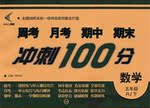题目内容
We are told that he will come this afternoon. If so, we will hold the meeting. If ________, there won't be any meeting this evening.
- A.that
- B.don't
- C.won't
- D.not

 新非凡教辅冲刺100分系列答案
新非凡教辅冲刺100分系列答案As people slowly learn to cure diseases, control floods, prevent hunger, and stop wars, fewer people die every year. As a result, the population of the world is becoming larger. In 1925 there were about 2 billion people in the world; today there are over 6 billion.
When the number rises, extra mouths must be fed. New lands must be brought under development, or land already farmed must be made to produce more crops. In some areas the land is so over-developed that it will be difficult to make it provide more crops. In some areas the population is so large that the land is divided into too tiny units to make improvement possible with farming methods. If a large part of this farming population went into industrial work, the land might be farmed much more productively (多产地) with modern methods.
There is now a race for science, technology, and industry to keep the output of food rising faster than the number of people to be fed. New types of crops, which will grow well in bad weather, are being developed, so there are now farms beyond the Arctic Circle in Siberia and North America. Irrigation (灌溉) and dry-farming methods bring poor lands under the plough. Dams hold back the waters of great rivers, which can provide water for the fields in all seasons and provide electric power for new industries. Industrial chemistry provides fertilizer to suit different soils. Every year, some new methods are made to increase or to protect the food of the world.
【小题1】The author says that the world population is increasing because _____.
| A.there are many rich valleys and large fields |
| B.farmers are producing more crops than before |
| C.people are living longer due to better living conditions |
| D.new lands are being made into farmlands |
| A.the land was divided into smaller pieces |
| B.people moved into the countryside |
| C.industrial methods were used in farming |
| D.the units of land were much larger |
| A.growing new types of crops | B.irrigation and dry-farming means |
| C.providing fertilizers | D.destroying pests and diseases |
| A.To develop a new kind of dry-farming methods. |
| B.To prevent crops from floods. |
| C.To provide water and electricity in all seasons. |
| D.To water poor lands in bad weather. |